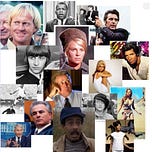‘Reckless utterances on the stump.’
It is December 3, 1901.
The new president, Theodore Roosevelt, has sent his written Annual Message, now called the State of the Union, to the Congress.

Roosevelt has been in office less than three months — since September 14 — the day on which his predecessor, William McKinley, succumbed to an infection caused by an assassin’s bullets.

The assassin was a 28-year-old unemployed, self-declared anarchist.
He fired two shots from a concealed hand gun into McKinley’s chest as he greeted well-wishers in a receiving line at Buffalo’s Pan American Exposition.

McKinley became the third president to be assassinated in a span of thirty-five years.


From the assassin’s voluntary, uncoerced confession:
“In these meetings I attended
“I heard people talk about the duty they were under to educate the people against the present form of Government
“and they should [do] all they could to change form of Government.”


The assassin was convicted and and executed within six weeks of the killing.
His last words:
"I killed the President because he was the enemy of the good people – the good working people.
“I am not sorry for my crime.”

McKinley’s assassination was the first topic Roosevelt addressed in his Annual Message.
And he lays partial blame for the killing on demagogues who stoke aimless discontent.

From Roosevelt’s Message:
“The Congress assembles this year under the shadow of a great calamity.
“The circumstances of this, the third assassination of an American President, have a peculiarly sinister significance.
“This criminal was a professed anarchist,
“inflamed by the teachings of professed anarchists,
“and probably also by the reckless utterances of those who,
“on the stump and in the public press,
“appeal to the dark and evil spirits of malice and greed, envy and sullen hatred.


“The wind is sowed by the men who preach such doctrines,
“and they cannot escape their share of responsibility for the whirlwind that is reaped.

“This applies alike to the deliberate demagogue,
“to the exploiter of sensationalism,
“and to the crude and foolish visionary who, for whatever reason,
“apologizes for crime
“or excites aimless discontent.”
We’ve been warned.
Today’s incendiary political rhetoric is nothing new.
Neither is the danger which it creates.
*******************************
I’ll see you tomorrow.
— Brenda
Banner image: Roosevelt in his third-party bid for the presidency, 1912.















Share this post